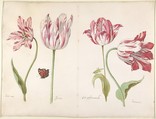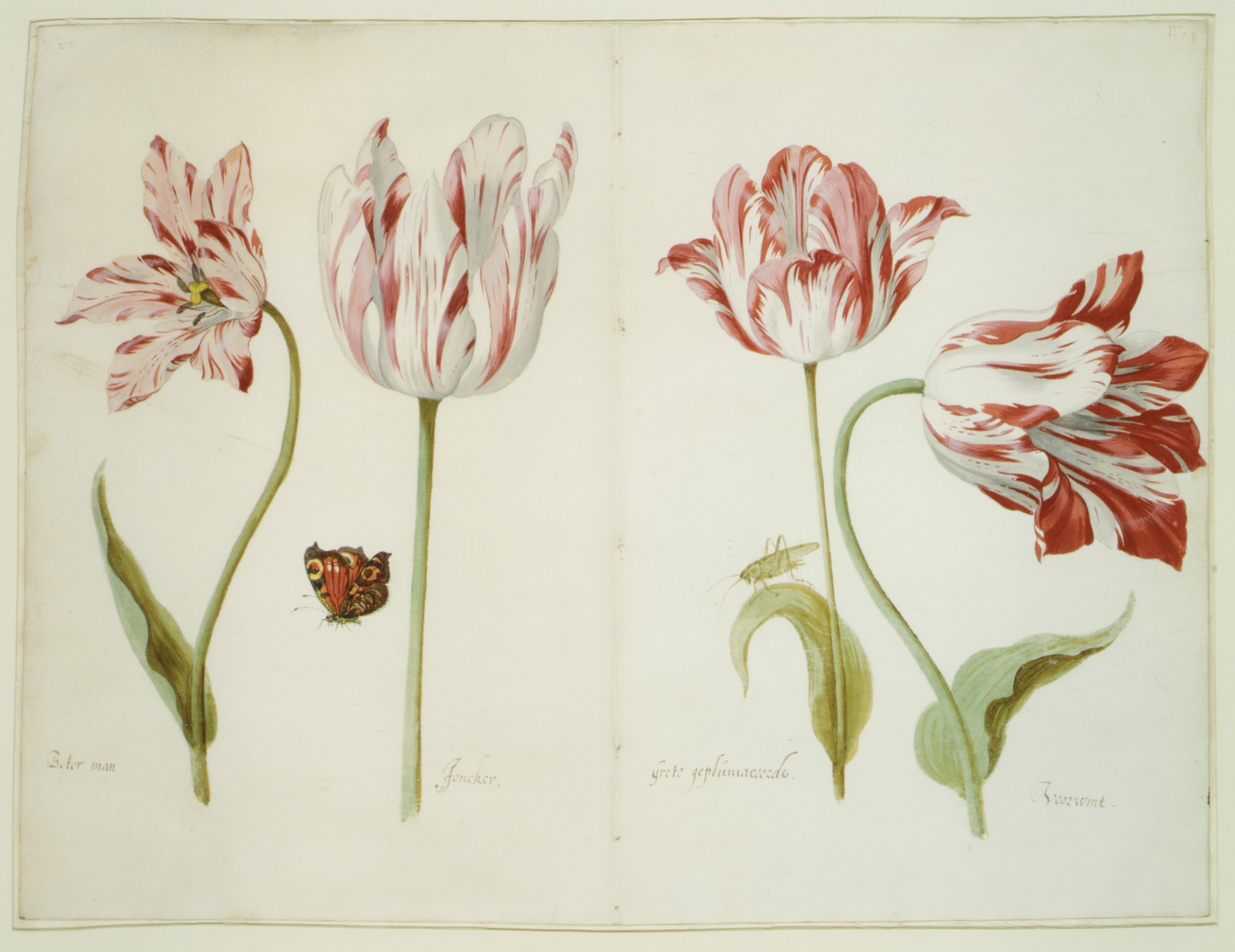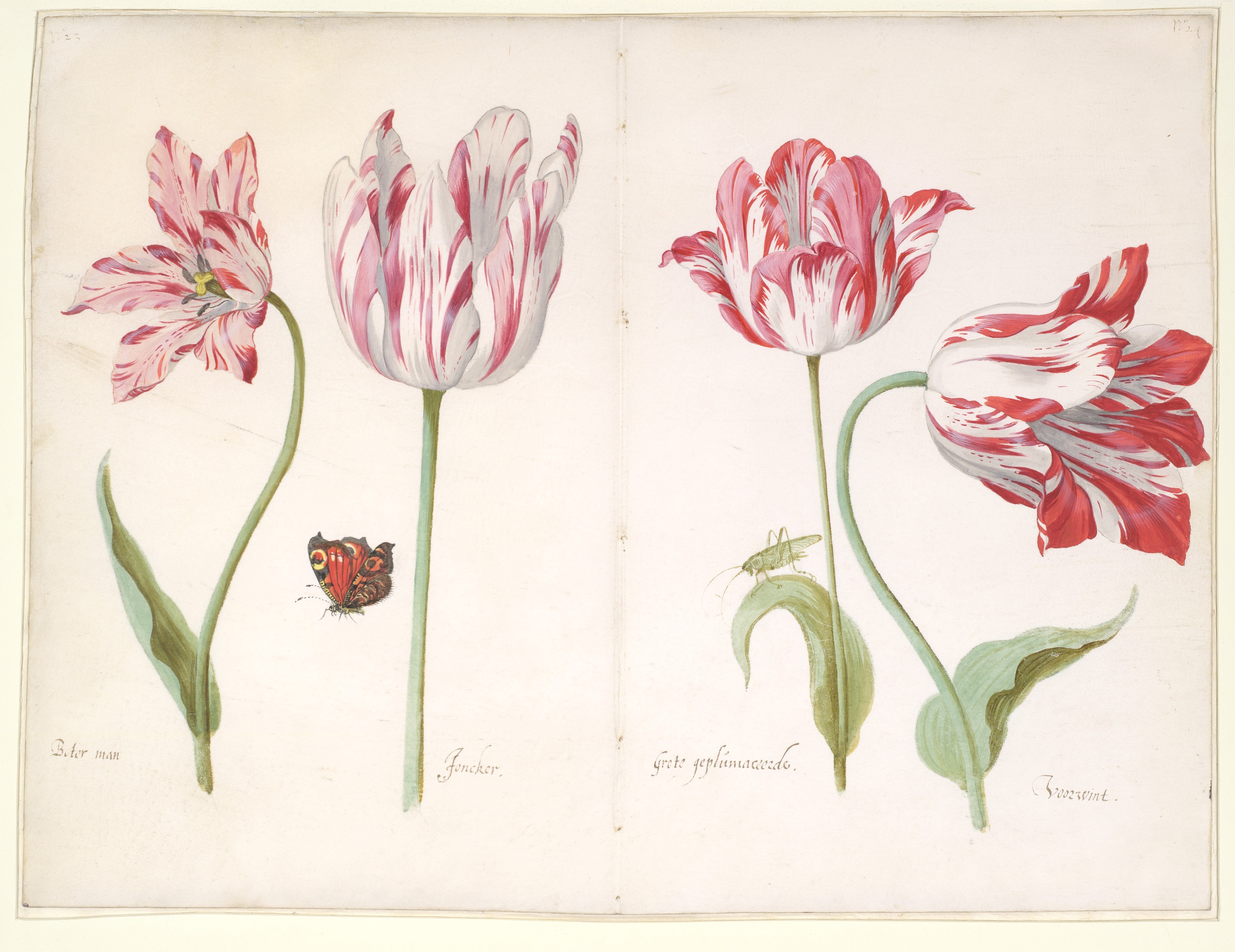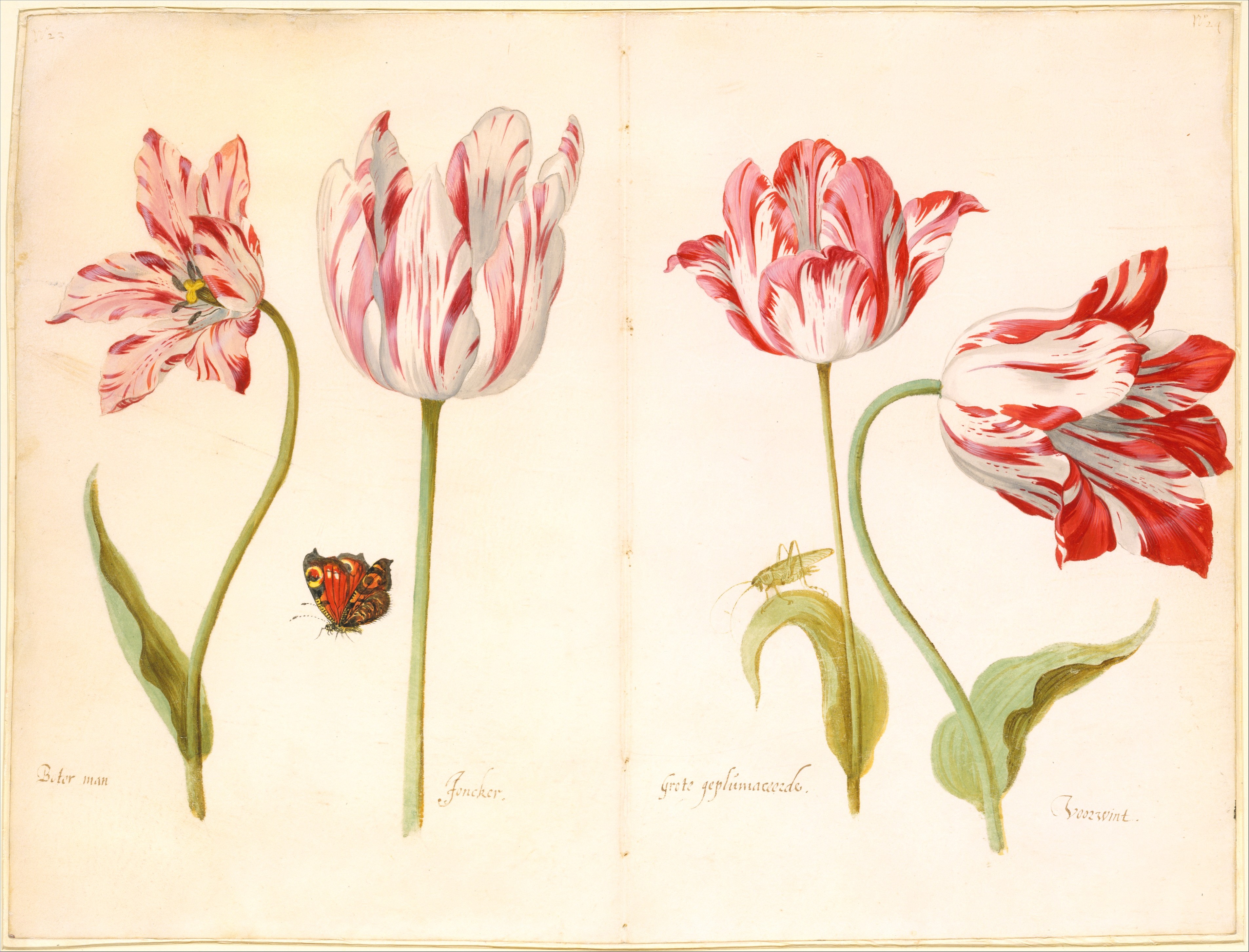Four Tulips: Boter man (Butter Man), Joncker (Nobleman), Grote geplumaceerde (The Great Plumed One), and Voorwint (With the Wind)
Jacob Marrel German
Not on view
This watercolor on vellum is a remarkable document of a fascinating moment in botanical and economic history, involving a venerated flower and its trade on the stock market. It depicts four different tulip cultivars, each clearly named (Boter man, Joncker, Grote geplumaceerde, Voorwint) and beautifully rendered to record the prized bloom. The sheet comes out of one of several watercolor albums or Tulpenboeken made by the Dutch still-life painter, print- and tulip dealer Jakob Marrel (1613–1681). Married to the widow of the German engraver Matthäus Merian, Marrel was stepfather and teacher of the well-known botanist-artist Maria Sibylla Merian. In addition to flower paintings, Marrel created at least six tulip books, three of which remain intact. Executed while he worked in Utrecht during the late 1630s and early 1640s, his tulip books coincide with the period when the Dutch developed a true passion for the tulip. Known as Tulipomania, the rage for this flower, especially in its variegated or multistriped form, resulted in wild speculation, ending in 1637 with the crash of the bulb commodity market. Still considered Holland's "national flower," the tulip actually was imported in the 1580s from Turkey, where it had been cultivated by the Ottomans from the beginning of the sixteenth century onward. It was the famous, widely traveled Flemish botanist Carolus Clusius (1526–1609), who, as supervisor of the Leiden Botanical Garden, was instrumental in furthering the introduction of the tulip and other exotic bulbs from West Asia, laying the foundation for Holland's modern-day global bulb industry.
Due to rights restrictions, this image cannot be enlarged, viewed at full screen, or downloaded.
This artwork is meant to be viewed from right to left. Scroll left to view more.






